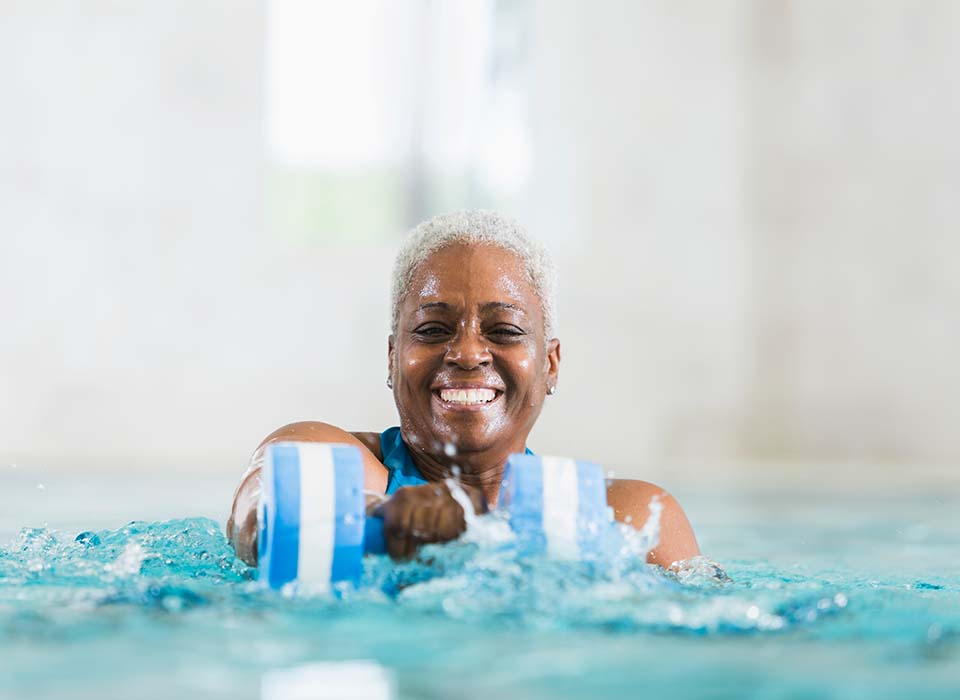Staying active is the key to healthy aging. Consistently staying active after the age of 50 can reduce the chance of falling, reduce injury and promote overall health. Physical activity is important for lungs, hearts, muscles and even minds of older adults. Active aging can be as simple as getting your body moving for 30 minutes a day and thinking intuitively about what you’re eating. As you get older your joints get weaker so low-impact workouts, like water aerobics, Pilates, yoga, cycling and walking are the best kinds of exercise. These low-impact workouts will allow you to stay active while protecting your body.
Water Aerobics
Water aerobics is a type of resistance training done in a pool. Since water supports your body, water aerobics offers cardiovascular, muscular, and weight loss benefits while protecting your joints and muscles from impact. Water also provides more resistance than air, making your muscles work harder than they would if the same exercises were done outside of the pool. Depending on the class and the instructor, water aerobics may be done in waist-deep water without swimming, or in deeper water with flotation belts. Some of the exercises performed in water aerobics include aqua jogging, flutter kicking, leg lifts, standing water push-ups and arm curls. Exercises may involve weights for added resistance.
Pilates
Pilates is a method of exercise that consists of low-impact flexibility and muscular strength and endurance movements. It involves mats and exercise balls to help build strength with low impact movements. In Pilates exercises, breathing, alignment, concentration and core strength are emphasized, and it improves balance, core strength and flexibility in older adults. Some Pilates movements that are helpful for older adults are the mermaid movement, side circles, leg circles and step ups. Pilates are usually done in a studio or gym but can also be done at home following online videos.
Chair Yoga
Chair yoga is a gentle form of yoga that is done either sitting down in a chair or standing using the chair for support. It helps reduce stress, improves flexibility, improves strength and reduces joint strain. Chair yoga modifies traditional yoga poses in order to perform them while sitting in a chair. Staying in a chair allows the participants to remain stable and reduces their chances of falling due to loss of balance. Chair yoga can be done anywhere you have access to a chair, like in a community center or your home.
Cycling
Cycling is good for brain function and cardiovascular health. It can be done outside on a bike, which is called road cycling, or it can be done on a stationary bike indoors. Often, older individuals feel more comfortable on a stationary bike in order to avoid falling. Cycling gets your heart rate elevated but limits the wear and tear on your body. If you are biking outside, make sure to take the proper safety precautions like wearing a helmet, planning your route and riding with friends.
Walking
Adding walks into your daily routine can be beneficial for heart health, lowers blood sugar, reduces pain and boosts mental health. Start by getting a supportive pair of shoes and finding a route that works for you. Make sure your route is somewhat flat to put less strain on your muscles and joints. If you haven’t walked frequently, begin slowly with a 10-minute walk and work yourself up to at least 30minutes. If the weather is not suitable for an outdoor walk, you can walk indoors on a treadmill or by walking around inside a large building such as a mall.
